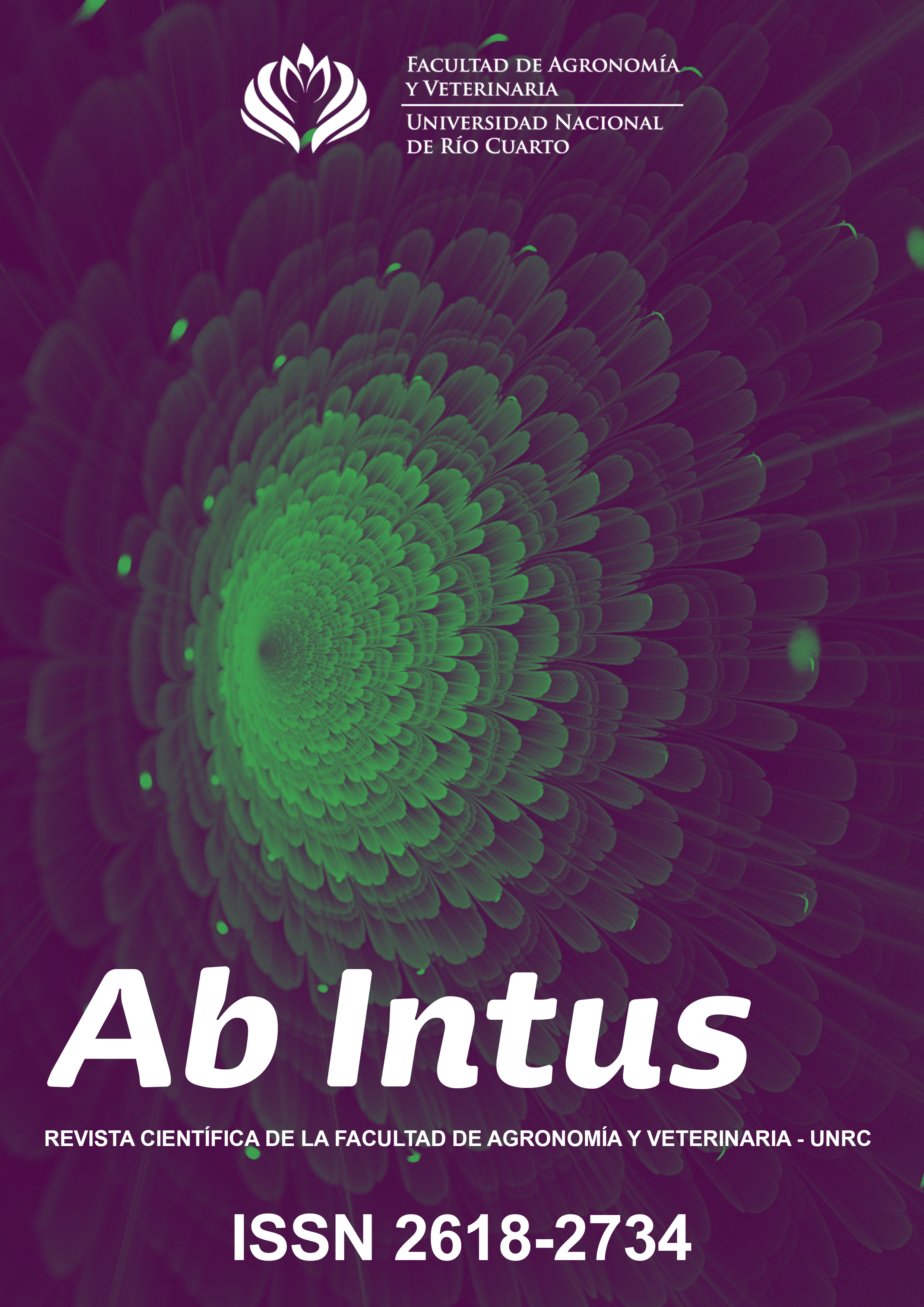Quantifying Thecaphora frezii inoculum and analysis of its dispersion
Abstract
Peanut smut is an endemic disease in the center-south of the province of Córdoba that has caused significant losses in productive lots. The intensity of the disease is markedly related to the number of teliospores present in the soil at the time of sowing. The objective of this work was to determine the most ad equate number of samples for the quantification of the density of inoculum of Thecaphora frezii in soil, by means of analytical method and graphical methodproposed by Kranz and the analysis of the dispersion of the pathogen. An assay was carried out in a production batch with high density of carbon inoculum. W was sampled at five sites and a total of 200 samples were obtained. The inoculum density was estimated by direct counting of the teliospores observed in an optical microscope at 40x. It was concluded that the use of the lowest variation coefficient values in the analytical method significantly increases the number of samples. Using the graphical method, the optimum sample size is lower than that obtained by the analytical method. Finally, the amount of inoculum of the smut peanut present in a lot near a processing plant is inversely proportional to the distance of the same to that source.Downloads
Download data is not yet available.
Downloads
Published
2023-05-05
How to Cite
Peralta, V., & Kearney, M. I. . (2023). Quantifying Thecaphora frezii inoculum and analysis of its dispersion. Ab Intus, (1). Retrieved from https://www.ayv.unrc.edu.ar/ojs/index.php/Ab_Intus/article/view/12
Issue
Section
Artículos
License
Copyright (c) 2022 Ab Intus

This work is licensed under a Creative Commons Attribution-NonCommercial 4.0 International License.


















